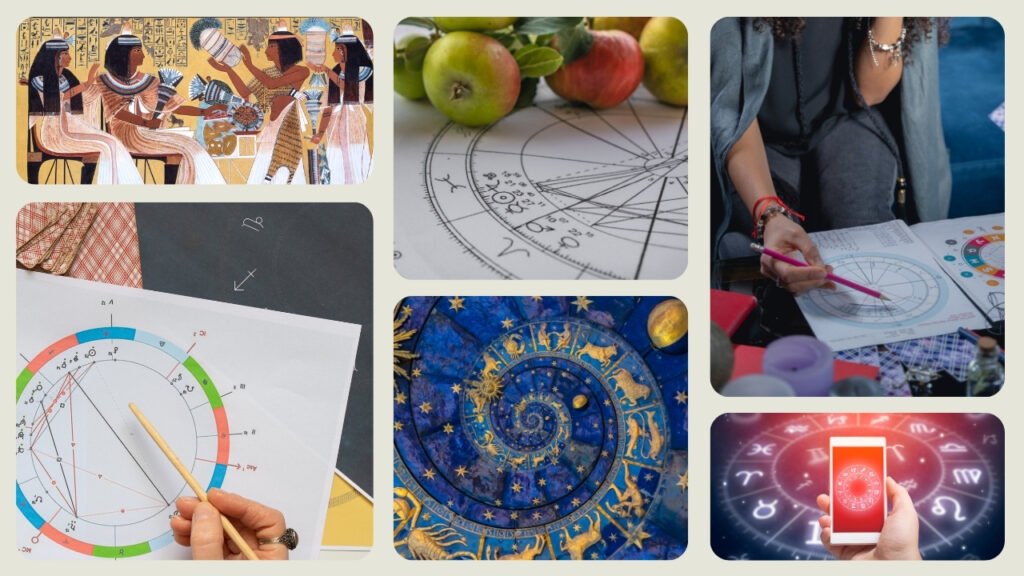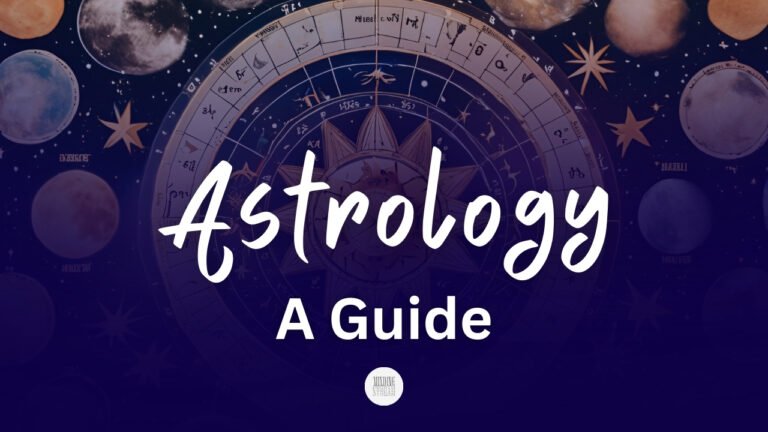Western Astrology Guide to Use for a Beautiful Experience

Western astrology is a major branch of this incredibly popular spiritual practice, and this guide has everything you need to know.
Today, it has become the most mainstream, and its popularity stems from many things, including history, media accessibility, and Western influence in many parts of the world.
In this guide, you will learn how it emerged from ancient Babylonian practices and evolved through the rich influences of Greek, Roman, and Egyptian traditions.
So if this is something you have an interest in, keep reading.
Western Astrology Basics
Western astrology is a system with roots tracing back to ancient cultures, such as the Egyptians, although Greeks and Romans substantially refined it.
This incredibly rich framework rests on the belief that the celestial bodies exert a profound influence on earthly events, particularly human personalities and fortunes.
Central to this branch are the birth chart, the twelve zodiac signs, and the planetary influences that are very important.
A major theme of this practice is that it places significant emphasis on the three primary components of an individual’s astrological profile, and they are the sun sign, moon sign, and ascendant.
The sun sign is the core of one’s personality and fundamental traits, whereas the moon sign represents emotional inner self and subconscious desires, and the ascendant indicates the outward demeanor and immediate responses to the world around us.
In other words, this tripartite system creates a nuanced interpretation of one’s character and destiny. One’s sun sign might indicate basic predispositions, but the moon and ascendant modify and add depth to these traits.
So, it’s this layered complexity that contributes to the enduring appeal of Western astrology in contemporary society.
Western Astrology Birth Chart

A Western astrology birth chart, or natal chart, is the cosmic blueprint that maps the positions of planets and celestial bodies at the precise moment of one’s birth.
Therefore, this is a fundamental tool in the practice, giving practitioners a comprehensive overview of a person’s unique traits, strengths, challenges, and potential life path.
In most schools within the branch, the birth chart comprises several key components. Foremost among these are the twelve houses, representing different areas of life such as career, relationships, and personal growth.
Next are planetary placements, indicating the sign and house each planet occupies at birth. These placements reveal specific attributes and tendencies.
Meanwhile, the aspects, or the angular relationships between planets, further adds to the interpretation of a birth chart. These angles denote the dynamic relationship between planetary energies.
Understanding one’s birth chart tends to be a transformative experience. Today, a plethora of online tools give people a chance to generate their own birth charts with ease.
Western Astrology Horoscope
Western astrology is deeply rooted in ancient traditions. The Egyptians left valuable tools for understanding oneself and the world.
A horoscope is one of those. This is a chart or diagram representing the positions of the Sun, Moon, planets, and astrological aspects at a specific moment in time.
Traditionally, horoscopes gave predictions and insights through examining the movement of these celestial bodies within the twelve zodiac signs.
Horoscope use is diverse and depends on the time frame they cover—daily, weekly, monthly, and yearly.
Daily horoscopes give us short-term insights into the patterns of luck, energy levels, and emotional state.
In many Western cultures, these horoscopes give people a chance to navigate through the day with a sense of preparedness.
Weekly horoscopes, on the other hand, tend to offer a broader scope that present key themes and potential challenges for the week.
For instance, weekly horoscopes may show items such as career opportunities, social engagements, or familial matters.
Meanwhile, monthly horoscopes dive into more influences, often focusing on significant planetary movements and their potential impact on various life sectors.
As a result of their nature, monthly horoscopes give people a chance to plan their month ahead with greater clarity.
This can be about financial decisions, personal growth, or relationship dynamics.
And, then, there are the yearly horoscopes, which provide an overarching view of the year.
These horoscopes give people a chance to understand long-term trends and major life events, such as career shifts, travel opportunities, or important emotional cycles.
Horoscopes are by far one of the reasons why Western astrology has taken off over the centuries.
Other Astrological Systems

Western astrology primarily rests on the tropical zodiac and, therefore, stands apart from other prominent astrological systems.
For the most part, this branch was born through Egypt. Ancient Egyptian astrology centers on the attributes and deities associated with various decans.
The decans are a ten-day periods within each Egyptian month, closely linked to specific stars and leading deities such as Osiris and Isis.
This divinatory system inherently integrates a spiritual and mythological aspect, making it distinctive compared to the more empirical patterns observed in Western astrology.
Hindu, or Vedic astrology, on the other hand, heavily relies on the sidereal zodiac.
Sidereal positions the zodiac signs on fixed stars rather than the seasonal calendar use in Western astrology.
Also, Vedic astrologers account for detailed planetary transits and conjunctions, focusing on a comprehensive understanding of karma and its influence over an individual’s destiny.
This elucidates a more deterministic viewpoint, in contrast to the more psychological and symbolic approach commonly observed in Western astrology.
Meanwhile, there is Chinese astrology, which categorizes individuals according to a 12-year cycle.
A specific animal sign intertwined with one of the five elements—Wood, Fire, Earth, Metal, and Water—represents each Chinese year.
Chinese astrology’s foundational theory is deeply rooted in ancient philosophical principles like Yin and Yang, differing starkly from the planetary and zodiacal influences that dominate Western astrology.
Western, Vedic, Chinese, and Egyptian all show us cultural beliefs, methodologies, and interpretive nuances.
What to Avoid
When diving into Western astrology, you really must approach this ancient practice with caution.
This is because you want to maximize its benefits without falling into common pitfalls.
One of the primary dangers is over-reliance on astrological predictions.
While Western astrology does offer insightful reflections and guidance, it is important to understand that it should not replace critical thinking and personal decision-making.
Over-dependence on horoscopes will lead to a passive attitude towards life, where one waits for stars to dictate actions instead of taking proactive steps.
Another critical area to be aware of is the potential for self-fulfilling prophecies.
If you believe too strongly in a negative astrological forecast, you might unconsciously act in ways that bring about those very situations.
For example, reading a prediction about a challenging period in one’s career might cause unnecessary anxiety, which could ultimately affect job performance.
Misperception is another pitfall in Western astrology. The language used in astrological interpretations is complex and nuanced, leading to varying interpretations.
Western astrology should primarily be your tool for self-reflection and personal growth.
It should never be a substitute rational thought and action.
Final Thoughts
Throughout this guide of Western astrology, discussion presented foundational elements, such as the significance of birth charts and the interpretative value of horoscopes.
The comparative analysis with other astrological systems, including Vedic astrology and ancient Egyptian astrology, should shed light on distinct methodologies and cultural perspectives.
And, of course, it is equally crucial to approach Western astrology with a discerning mindset.
That said, though, this is an amazing spiritual practice to incorporate into your life.

